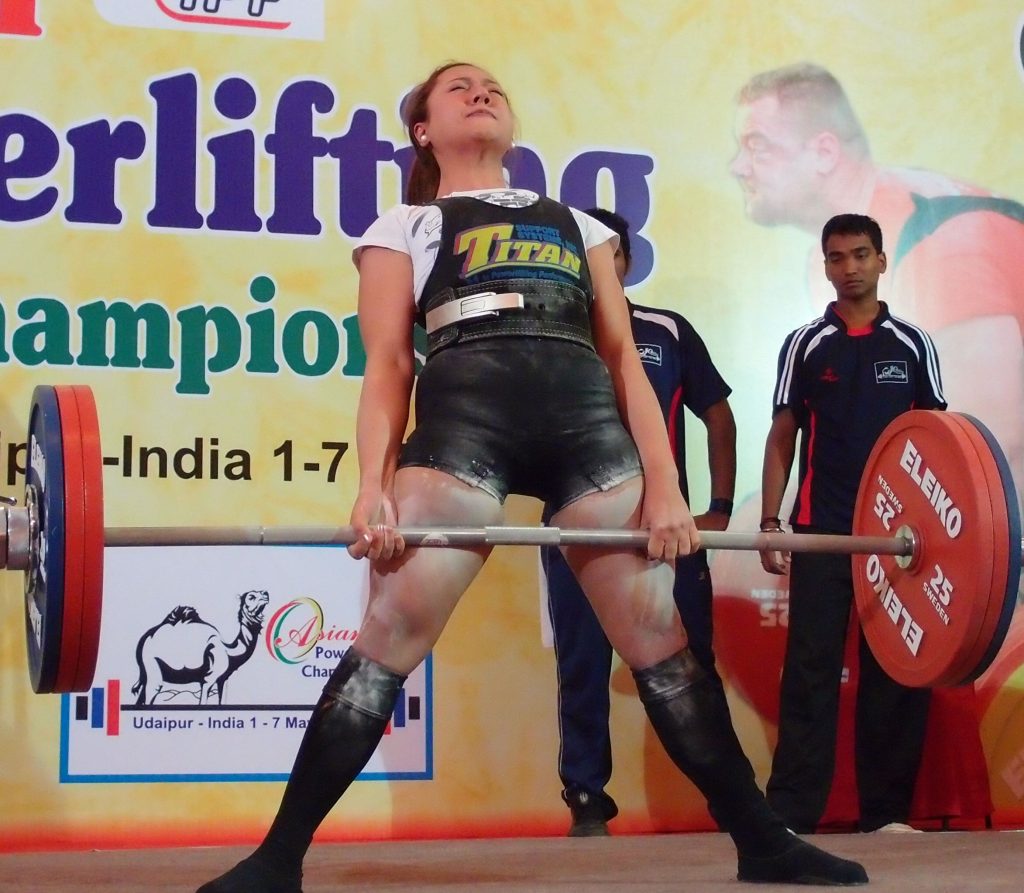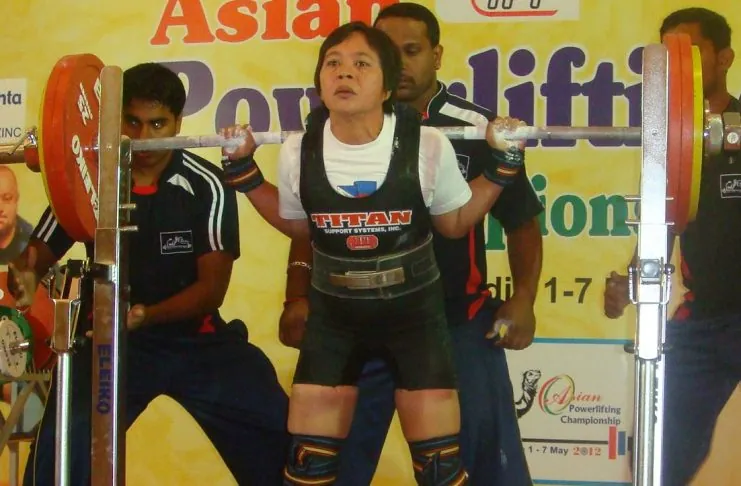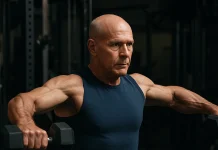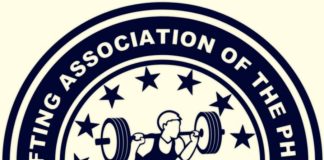Last Updated on July 3, 2024
What is Powerlifting? Powerlifting stands as a gripping strength sport that compels its participants to surpass their physical limits. Its essence lies in the competition to lift the heaviest weights across three exercises: squat, bench press, and deadlift. These challenges, collectively known as the ‘big three,’ are pivotal in testing an athlete’s might and stamina. Furthermore, its roots trace back to historic strength contests. Over time, it has emerged as a globally esteemed athletic pursuit, complete with its federations and ardent followers.
Contrasting with bodybuilding’s focus on aesthetics, powerlifting prioritizes sheer strength and the capacity to conquer serious weights. Athletes dedicate themselves to the grind, aiming to surpass previous achievements and establish novel records in these fundamental lifts. This pursuit isn’t limited by origins; individuals from varied backgrounds are drawn together by a common interest in potent strength and the excitement of surpassing their personal limits.
In powerlifting contests, a uniform approach reigns, with competitors segregated into weight categories and age groups. The scene is set for lively action as athletes vie to redefine their personal and global bests. These spectacles not only enthrall viewers worldwide but also serve as a gateway to substantial physical and mental well-being for those involved, affirming powerlifting’s broad appeal within the fitness arena.
Key Takeaways
- Powerlifting is a strength-based sport that focuses on the three main lifts: squat, bench press, and deadlift.
- The sport tests an individual’s maximum strength and muscular endurance.
- Powerlifting competitions follow a standardized format with weight classes and age divisions.
- Powerlifting offers numerous physical and mental health benefits for athletes.
- The sport has a rich history and a dedicated global community of enthusiasts.
Powerlifting: The Ultimate Strength Sport
Powerlifting is an enthralling sport that pushes the boundaries of human strength. At its heart, powerlifting comprises three main lifts: the squat, bench press, and deadlift. Lifted with the utmost weight, these exercises form the core challenges of this sport.
Defining Powerlifting
Powerlifting pits athletes against the heaviest weights in the squat, bench press, and deadlift. This differs from bodybuilding or Olympic weightlifting where a mix of movements is involved. Each lift in powerlifting focuses on a unique strength area.
The Three Competitive Lifts
The essence of powerlifting lies in these three key lifts:
- Squat is a full-body exercise requiring the lifter to raise a barbell from the ground until their hips and knees are straight.
- Bench Press highlights upper body strength. Athletes lower a barbell to their chest and press it upwards targeting the chest, shoulders, and triceps.
- Deadlift emphasizes the posterior chain, challenging one to lift a barbell from the floor to a standing position.
Each lift adheres to strict rules by powerlifting federations to ensure fairness among competitors.
For powerlifters, honing the form and technique of these lifts is paramount. It’s how they aim for personal achievements and top-tier competition success.
The Origins and Evolution of Powerlifting
The captivating history of powerlifting dates back to the early 20th century, when enthusiasts and athletes explored human physical limits. Originating in small regional contests, powerlifting has grown into a worldwide sport.
In the late 1800s and early 1900s, strongmen and weightlifters demonstrated their strength. They laid the foundation for the sport’s core lifts: the squat, bench press, and deadlift.
The 1950s and 1960s saw the establishment of organizations, setting the rules we follow today. The International Powerlifting Federation (IPF), formed in 1973, greatly expanded the sport’s reach and organized international competitions.
Legends such as Ed Coan and Lamar Gant have defined powerlifting with their incredible performances. Modern athletes continue to break records, inspiring a new generation of strength enthusiasts.
Today, powerlifting is more popular than ever, with competitions held by worldwide federations. The sport’s future is promising, ready to captivate audiences and strengthen its community for years to come.
Powerlifting Competitions: Rules and Formats
Powerlifting competitions stand as the pinnacle of raw strength tests for athletes worldwide. A vast set of rules and formats exists to maintain a level playing field, ensuring fairness and safety.
Competition Classes and Divisions
Competitions are segmented into specific weight classes and age groups. This setup evens out the competitive landscape. Wrestlers fall into various categories based on their weight, moving from lightweight to superheavyweight. Moreover, there are gender-specific divisions and age brackets, including juniors, sub-juniors, open, and masters.
Judging and Scoring Systems
Central to the success of any powerlifting challenge is the acuity and consistency of its judicators. Certified panel judges analyze each lifter’s performance in the squat, bench press, and deadlift. They uphold the strict powerlifting rules, grading on proper technique adherence and lift execution. After compiling the scores, the competitor lifting the heaviest combined weight emerges the victor in their category.
“Powerlifting competitions are the ultimate test of pure strength, where athletes push the boundaries of human potential.”
The complexity and precision of the scoring and judging pave the way for a sport that truly measures brute force and skill. These benchmarks underline the captivating nature of powerlifting, driving competitors and spectators alike towards the pursuit of unmatched strength and excellence.
Essential Powerlifting Equipment
Powerlifting requires specialized equipment for lifts to be both safe and effective. This includes a range of items like barbells, plates, squat racks, and lifting belts. Choosing the right gear is crucial for a powerlifter’s performance. It can help you achieve new levels of strength in your training.
Specialized Gear for Safe and Effective Lifting
The core of any powerlifting system is the barbell. Unlike regular barbells, powerlifting barbells are built to be more rigid and robust. This design supports the heavy weights powerlifters work with. Additionally, powerlifters use a variety of plates to adjust the bar’s weight.
Having proper lifting platforms and squat racks is vital. They offer a steady foundation for lifts. This stability not only keeps athletes safe but also protects the equipment.
Powerlifters also utilize gear like lifting belts, knee sleeves, and wrist wraps. These accessories are essential for support and injury prevention. They protect the core, knees, and wrists during powerlifting’s key lifts: squat, bench press, and deadlift.
| Powerlifting Equipment | Purpose |
|---|---|
| Powerlifting Barbell | Designed for heavy loads and rigid construction |
| Lifting Plates | Provides the necessary weight for loading the barbell |
| Squat Rack | Provides a secure and stable base for the squat lift |
| Lifting Belt | Supports the core and lower back during heavy lifts |
| Knee Sleeves | Provide warmth and compression to the knee joints |
| Wrist Wraps | Stabilize the wrists during the bench press and other lifts |
Choosing the right powerlifting equipment is fundamental for any powerlifter. With the correct gear, you can lift heavier weights safely. This also allows you to reach your full strength potential and enhance your performance.
“The equipment you use in powerlifting can make or break your performance. Invest in quality gear that will support and protect you during your lifts.”
Training for Powerlifting: Principles and Methods
Powerlifting is more than just lifting heavy weights. It demands a focused and strategic training regimen. This involves honing both strength and technique for the three main lifts – the squat, bench press, and deadlift. We will delve into the crucial principles and methods behind the physical preparation that powerlifters undertake to meet their objectives.
Strength Building Exercises
The core of powerlifting training is a selection of exercises designed to target specific muscle groups and movements essential for success. These activities serve multiple purposes, including the enhancement of sheer strength, the refinement of proper lifting techniques, and the improvement of neural pathways. Among the critical exercises are:
- Squats
- Bench Press
- Deadlifts
- Overhead Press
- Rows
- Leg Curls
- Tricep Extensions
Integrating these powerlifting exercises into a structured regimen allows powerlifters to systematically develop the necessary strength and bulk for competitive greatness.
Periodization and Programming
Strategic powerlifting training includes methods of periodization and program organization. Periodization divides the training plan into phases, each serving a specific purpose, like building strength, peaking, or recovery. This structured approach lets powerlifters aim for certain improvements and enhance their performance gradually.
Under the periodization model, powerlifters coordinate various training styles, such as:
- Heavy, low-rep training for strength gains
- Moderate weights with higher reps for endurance and muscle growth
- Explosive movements for power and speed
Through a well-balanced blend of these strategies and systematic periodization, powerlifters are poised to maximize their achievements at competitions.
“Powerlifting training is not just about brute force; it’s a delicate balance of strength, technique, and strategic planning.”
Nutrition and Diet for Powerlifters
Powerlifting, as a sport, requires a nuanced approach to nutrition strategy. It’s essential to provide the body with adequate macronutrients and calories. This is critical for both establishing and sustaining the muscle mass needed for peak performance in its primary lifts.
Fueling for Strength and Recovery
Arguably, powerlifters have distinct dietary needs not typically seen in other athletic disciplines. Their regimen consists of a calorie-dense diet, rich in proteins and carbohydrates, yet mindful of healthy fats. This nutritional profile is necessary to support their rigorous training and the demands of competitive events.
- Protein is the cornerstone for muscle building. In general, powerlifters need between 1.6 to 2.2 grams of protein daily for every kilogram of their body weight. This is crucial for muscle repair and growth.
- High-intensity exercises rely on carbohydrates as the essential energy source. Hence, powerlifters should target a daily intake of 4 to 7 grams of carbohydrates for each kilogram they weigh. This helps in refueling glycogen stores and sustaining energy levels.
- Don’t overlook healthy fats’ role; they are vital for hormone synthesis, joint function, and overall health.
Nutrient timing and hydration are key components of a powerlifter’s diet beyond just macronutrient considerations. A meal or shake packed with protein, consumed within half an hour post-workout, is valuable. It ensures muscle recovery and ongoing growth.
| Macronutrient | Recommended Daily Intake for Powerlifters |
|---|---|
| Protein | 1.6 – 2.2 g/kg of body weight |
| Carbohydrates | 4 – 7 g/kg of body weight |
| Fats | Moderate, focusing on healthy sources |
Adhering to a meticulously crafted powerlifting diet empowers athletes to enhance their strength, power, and recovery. This can lead them to achieve their utmost potential within the sport.

“Proper nutrition is the foundation of a successful powerlifting program. Fueling your body with the right macronutrients and calories can make all the difference in your training and competition performance.”
Powerlifting Federations and Organizations
The powerlifting world thrives due to a variety of federations and organizations. They are key to the sport’s growth. These groups set the standards and rules for powerlifting competitions globally and locally.
The International Powerlifting Federation (IPF) stands out as the main governing body internationally. It oversees competitions and ensures global standards in powerlifting. This includes member federations and ethical rules.
There are also national powerlifting bodies, like USA Powerlifting (USAPL), British Powerlifting Union (BPU), and Australian Powerlifting Union (APU). They manage events within their countries and ensure fair competition.
Besides these, independent powerlifting groups exist with their own rules. For instance, the World Raw Powerlifting Federation (WRPF), Global Powerlifting Committee (GPC), and World Powerlifting Congress (WPC). They cater to diverse athlete needs, including varied equipment and rules.
| Federation | Governing Scope | Notable Competitions |
|---|---|---|
| International Powerlifting Federation (IPF) | Global | IPF World Championships, IPF Classic World Championships |
| USA Powerlifting (USAPL) | United States | USAPL National Championships, USAPL Regional Competitions |
| British Powerlifting Union (BPU) | United Kingdom | BPU National Championships, BPU Regional Competitions |
| Australian Powerlifting Union (APU) | Australia | APU National Championships, APU State/Territory Competitions |
| World Raw Powerlifting Federation (WRPF) | Global | WRPF World Championships, WRPF Continental Championships |
The variety of powerlifting federations ensures athletes find their perfect match. Each federation offers different rules, equipment, and formats. This caters to the global powerlifting community’s diverse needs.
What Is Powerlifting: Breaking World Records
Powerlifting, often referred to as the zenith of raw strength and mental fortitude, captivates the globe. It is at the vanguard of exploring human potential. Discipline and a relentless aspiration to redefine known limits mark this thrilling journey.
Legendary Powerlifters and Their Achievements
In the grand narrative of powerlifting, names like Eddie Hall and Brent Fikowski stand out. Eddie Hall’s historic 500 kilograms deadlift, uncharted until he achieved it, showcases such power. Similarly, Brent Fikowski’s multiple world records underscore unmatched strength in squat, bench press, and overall performance.
| Powerlifter | Record Lift | Weight Category | Year |
|---|---|---|---|
| Eddie Hall | 500 kg (1,102 lbs) Deadlift | Open | 2016 |
| Brent Fikowski | 440 kg (970 lbs) Total | 105 kg | 2022 |
| Jen Thompson | 215 kg (473 lbs) Squat | 82.5 kg | 2018 |
| Ray Williams | 500 kg (1,102 lbs) Squat | 120 kg | 2017 |
Their record-breaking accomplishments kindle the fires of ambition for many. Powerlifting’s effect is not only the trophies, but also the stirring of dreams worldwide. It is a beacon of possibility, transcending cultural and personal barriers.
“In powerlifting, the only limits are the ones you set for yourself. These athletes have proven that with unwavering determination and relentless training, the impossible can become reality.”
The Mental Game: Mindset and Motivation
Powerlifting transcends mere physical exertion, encompassing a profound mental dimension. Achievement in the realm of powerlifting benefits hinges on cultivating a resilient mindset and unshakable drive. This segment explores the psychological underpinnings vital to the triumph of powerlifters.
Developing a Winning Mindset
To dominate in powerlifting, one must wield intense concentration, unyielding self-belief, and adept problem-solving skills. Elite athletes harness a profound form of mental fortitude to combat discomfort, weariness, and inner skepticism. Employing visualization, mantras, and strategic goal formation, they sustain an optimistic and assertive demeanor, regardless of challenges.
Harnessing Motivation
Enduring motivation serves as the linchpin of a powerlifter’s voyage. Be it the quest for personal records, the ambition to compete at elite stages, or the yearning to surpass previous limits, the powerlifting benefits epitomize an inexhaustible well of drive. Powerlifters derive inspiration from their mentors, peers, and the collective powerlifting ethos, which propels their ambition.
- Develop a positive and resilient mindset
- Utilize visualization and affirmations to boost self-belief
- Set achievable goals to maintain motivation and focus
- Seek support and inspiration from the powerlifting community
Ultimately, the mettle of powerlifting’s mental facet equals its physical axiom. Through fortifying their mindset and harnessing motivation, sportsmen can unleash their complete capability. This culminates in extraordinary powerlifting benefits both within and beyond the competitive arena.
“Powerlifting is 90% mental and 10% physical. If your mind isn’t right, your body won’t follow.” – Unknown

| Mental Strategies | Benefits |
|---|---|
| Visualization | Improves performance, boosts confidence, and helps manage pre-competition nerves |
| Goal-Setting | Provides a clear direction, increases motivation, and helps track progress |
| Positive Self-Talk | Combats negative thoughts, fosters self-belief, and enhances resilience |
Injury Prevention and Recovery
Powerlifting involves significant physical strain and hence, the risk of injury is high. It’s vital for powerlifters to know the common injuries linked with the sport. It’s also crucial to be aware of how to recover and prevent these injuries. Doing so will ensure a safe training environment, optimal performance, and the avoidance of any setbacks.
Common Powerlifting Injuries
The most frequent powerlifting injuries are:
- Shoulder injuries, such as rotator cuff tears and impingement syndromes
- Lower back strains and sprains
- Knee issues, including patellar tendinitis and ACL/MCL tears
- Elbow problems, including epicondylitis (tennis/golfer’s elbow)
- Wrist sprains and strains
These injuries often stem from the extreme stress induced by the squat, bench press, and deadlift. These are the main powerlifting movements.
Rehabilitation and Prehabilitation Strategies
To minimize powerlifting injuries risk and fast-track recovery, several strategies can be utilized. These include:
- Proper Warm-Up and Cool-Down: Engaging in dynamic stretching, mobility work, and light cardio readies the body for intense sessions. It also aids in post-session recovery.
- Strength and Stability Training: Focusing on exercises that rectify muscle imbalances and boost joint stability can significantly reduce injury risks. They improve overall movement efficiency.
- Active Recovery: Activities like swimming, cycling, or light cardio are low-impact. They boost blood flow and promote healing without adding excessive stress to the body.
- Physiotherapy and Manual Therapy: Seeking guidance from a qualified physiotherapist or sports medicine expert is crucial. They help pinpoint and treat underlying conditions with specialized care.
- Adequate Rest and Sleep: Enough downtime between sessions is critical. It prevents overuse injuries and supports the body’s natural healing mechanisms.
By taking a holistic approach to dealing with powerlifting injuries, athletes can significantly enhance their physical health. They can prolong their careers while constantly improving in their sport.
| Common Powerlifting Injuries | Causes | Preventive Measures |
|---|---|---|
| Shoulder Injuries | Excessive overhead pressing, poor technique, imbalances | Mobility drills, rotator cuff strengthening, proper form |
| Lower Back Strains | Heavy deadlifts, rounding of the back, poor core stability | Strengthening the posterior chain, bracing technique, core training |
| Knee Issues | Excessive squatting, inadequate mobility, muscular imbalances | Improving ankle and hip mobility, strengthening surrounding muscles |
| Elbow Problems | Excessive pressing, poor grip technique, overuse | Elbow strengthening exercises, proper hand positioning, rest and recovery |
| Wrist Sprains | Heavy loads, poor wrist positioning, lack of wrist flexibility | Wrist mobility drills, use of wrist wraps, proper grip and hand placement |
Powerlifting for Beginners: Getting Started
Starting your powerlifting for beginners journey is thrilling and fulfilling. It’s a great way to boost your strength and push your limits. If you’re ready to dive into a new fitness activity, powerlifting is a rewarding choice. So, let’s begin with some key steps to set a solid base for your powerlifting adventure.
Finding the Right Gym and Coach
The beginning of your path in powerlifting for beginners is finding the right gym. You need a place that supports powerlifting specifically, with a proper platform, great equipment, and expert coaches. A good gym will make a huge difference in your learning and progress.
A knowledgeable powerlifting coach is also critical. They’ll show you how to do the important lifts correctly and create a training plan that fits your goals. The best coaches offer advice, fix your form, and keep you safe while getting stronger and more skilled.
Building a Strong Foundation
For starters in powerlifting for beginners, building a strong foundation is key. Work on mastering the foundations first, such as squats, bench presses, and deadlifts. It’s vital to focus on doing these exercises right rather than adding too much weight. This approach keeps you injury-free and strong.
Don’t forget the accessory exercises, like rows, pull-ups, and overhead presses. These support the main lifts and enhance your overall strength. Staying mobile, flexible, and strengthening your core is crucial for performing well in powerlifting.
Lastly, remember that patience and staying consistent are crucial in powerlifting for beginners. It’s not a short journey to achieve excellence in this sport. But, with time, following a solid training plan, and acknowledging your progress, success will follow.
Starting powerlifting for beginners means accepting challenges, learning from the best, and relishing every achievement. With commitment and continuous effort, you’ll realize the immense impact powerlifting has on your life. It’s a journey that transforms you, not just physically, but mentally too.
The Benefits of Powerlifting
Powerlifting transcends merely showcasing physical strength. It encompasses a broad spectrum of advantages for both the body and mind, leading to a holistic enhancement in one’s well-being. The activity not only aids in the development of robust muscle but also cultivates unmatched mental strength.
Physical and Mental Advantages
Powerlifting’s most notable benefit is the marked improvement in total strength and muscle growth it brings. The rigorous training that powerlifters undergo significantly enhances lean muscle mass. This results in not just an improved physique but also a hike in the metabolic rate and better bodily function. Furthermore, its positive effect on the heart and lungs is evident from the demands the sport places on them.
The mental gains from powerlifting are equally weighty. It mandates an intense focus, a disciplined approach, and unparalleled tenacity. These traits can spill over into real-life scenarios, fostering self-assurance, efficient goal setting, and an unyielding attitude towards obstacles. Achieving milestones such as mastering formidable lifts not only enriches an individual’s mental landscape but also kindles a sense of accomplishment and self-worth.
Embracing powerlifting signifies engaging in a journey that brings forth the best in both the physique and the mind. It offers a platform for strength building, overall fitness enhancement, and the forging of a resilient mindset. Given its myriad advantages, powerlifting stands as an enticing pursuit for anyone looking to push their limits, regardless of age or current physical condition.
FAQ
What is powerlifting?
Powerlifting is more than just lifting heavy weights. It’s a competitive sport that tests your strength. The athletes, called powerlifters, aim to lift the highest weight they can in three specific exercises: squat, bench press, and deadlift.
What are the three competitive lifts in powerlifting?
In powerlifting, the competitive lifts are the squat, bench press, and deadlift. These are performed in a certain order. This sequence helps determine a lifter’s total score and ranking at competitions.
How did powerlifting originate and evolve?
The history of powerlifting goes back to the early 1900s. It emerged from weightlifting and strongman competitions. Since then, it has grown into a major sport with its own set of rules and international recognition.
How are powerlifting competitions structured?
Powerlifting competitions divide participants into classes based on weight and other factors. Athletes compete by lifting weights in three main exercises. How much weight they lift helps determine their ranking.
What kind of equipment is used in powerlifting?
Special equipment is used in powerlifting, like barbells, weights, and lifting belts. These tools are essential for safety and maximizing strength. They help lifters perform their best in the sport.
How do powerlifters train and prepare for competitions?
To prepare for competitions, powerlifters engage in targeted training. This includes the three primary lifts as well as other strength exercises. The training is carefully planned to peak performance at the right time.
What role does nutrition and diet play in powerlifting?
Nutrition is a key part of a powerlifter’s routine. It directly affects their strength and recovery. Powerlifters tailor their diets to meet the demands of their intense training and competitive goals.
What are the different powerlifting federations and organizations?
Various federations and organizations oversee the sport of powerlifting worldwide. Each has its own set of standards and competitions. Together, they contribute to the broad growth and structure of the sport.
What are some of the world records and legendary achievements in powerlifting?
Powerlifting is known for its awe-inspiring world records and historic achievements. Top athletes in powerlifting have set the bar high through their amazing performances. These accomplishments shape the sport’s legacy and inspire new generations of lifters.
What are the mental and psychological aspects of powerlifting?
Beyond physical strength, powerlifting demands mental toughness. Sports psychology, including focus and stress management, is crucial for success. Powerlifters train not just their bodies but also their minds for peak performance.
How can beginners get started in powerlifting?
Anyone looking to begin powerlifting should start with the basics. This includes finding the right gym, working with knowledgeable coaches, and focusing on technique. Building a strong foundation is essential for long-term success.
What are the benefits of powerlifting?
Powerlifting offers benefits for both the body and mind. It’s a dynamic way to build strength, muscle, and overall fitness. Engaging in this sport can lead to improved health and mental toughness.






